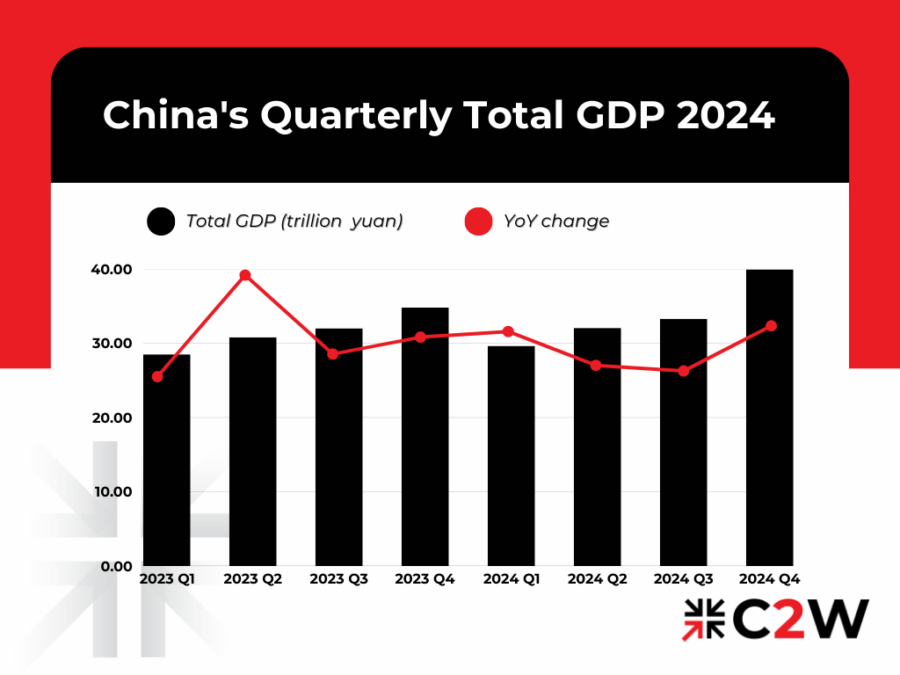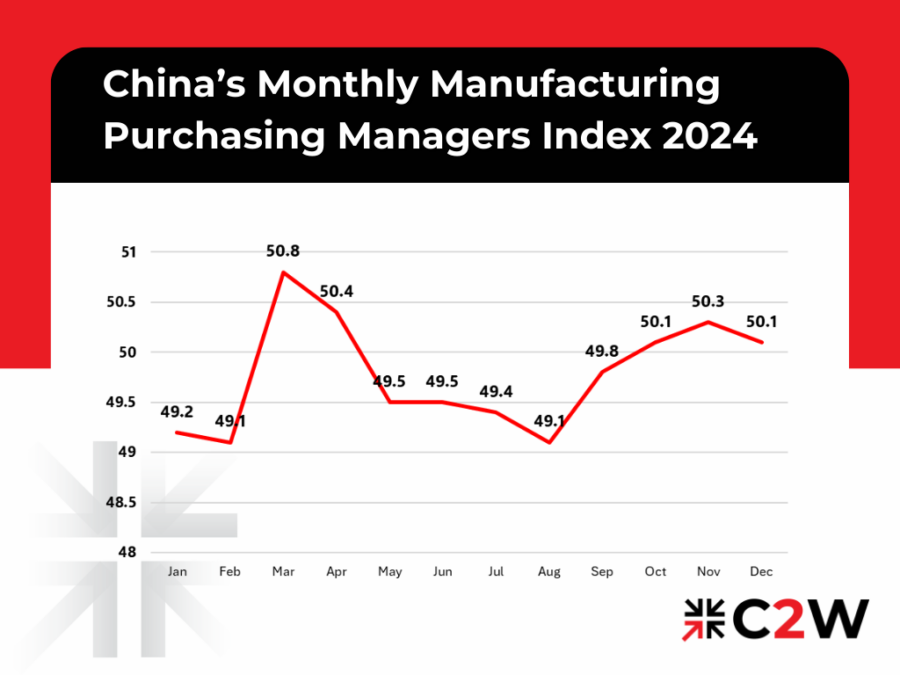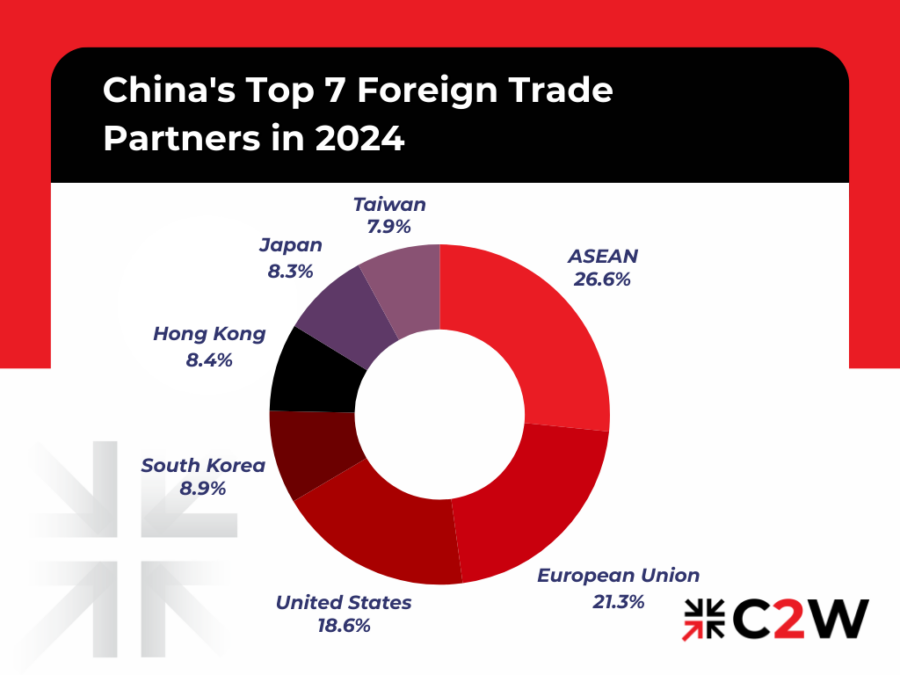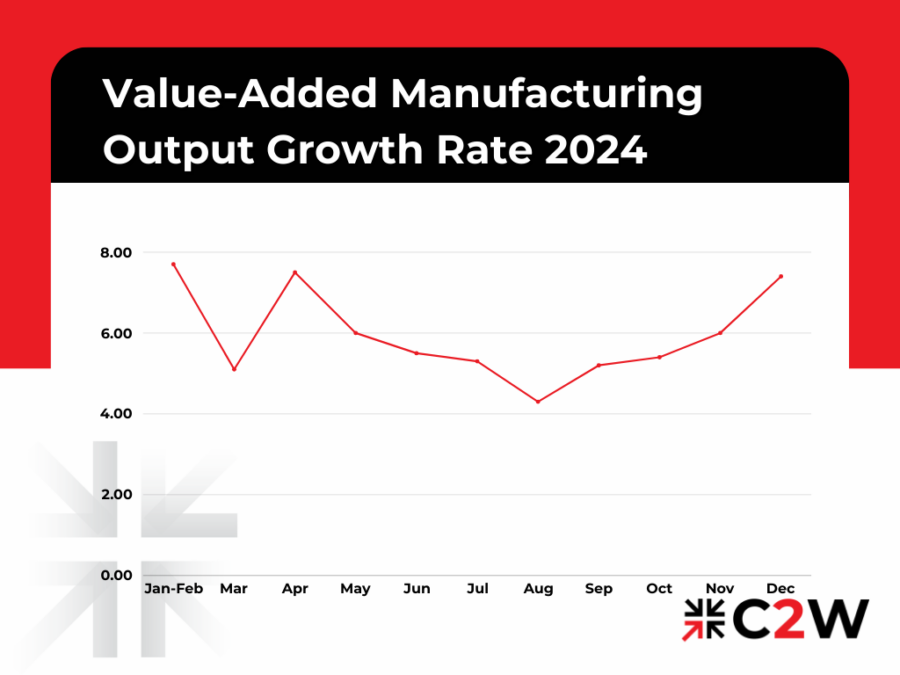As we look back on 2024, China has once again solidified its position as the world’s manufacturing powerhouse. Despite global economic uncertainties and evolving trade dynamics, the country continues to be the backbone of global supply chains. China’s resilience, adaptability, and strategic investments in cutting-edge technology have played a crucial role in maintaining its manufacturing leadership. Let’s dive into the key factors that contributed to China’s manufacturing dominance this year.
1. China’s Impressive GDP Growth
One of the strongest indicators of China’s manufacturing leadership is its steady GDP growth. In 2024, China’s economy is expected to grow at a resilient pace, despite global uncertainties. According to data from the National Bureau of Statistics, China’s gross domestic product (GDP) for 2024 reached 134.91 trillion yuan (around 18.41 trillion U.S. dollars), marking a 5% increase from the previous year. Notably, the GDP growth accelerated to 5.4% in the fourth quarter, surpassing market forecasts. This followed growth rates of 5.3%, 4.7%, and 4.6% in the first, second, and third quarters, respectively.
China has launched and implemented several government-backed initiatives to stimulate consumption, including a consumer goods trade-in program and subsidies for purchasing digital products and electric vehicles. These efforts aim to accelerate consumption recovery and provide a strong boost to the nation’s economic growth.

2. Total Trade: China’s Power in Global Commerce
China’s trade performance in 2024 was nothing short of impressive. The country’s total imports and exports amounted to a staggering 43.85 trillion yuan (approximately $5.98 trillion), marking a 5% increase from the year before and reinforcing its position as the world’s largest trading nation.
The growth was well-rounded, with significant increases in both imports and exports. China remains a dominant force globally, supplying a vast array of products including raw materials, electronics, machinery, and finished goods. Exports saw a robust increase of 7.1%, totaling 25.45 trillion yuan (around $3.47 trillion). Imports also expanded, growing by 2.3% to reach 18.39 trillion yuan (about $2.51 trillion). This strong trade activity contributed to a record-breaking trade surplus of over 7 trillion yuan (nearly $1 trillion), surpassing the previous high in 2022 of 5.86 trillion yuan ($838 billion).
Particularly in the fourth quarter, trade volumes soared, with totals exceeding 11.51 trillion yuan. By December, this figure had climbed to an unprecedented high of over 4 trillion yuan, highlighting a strong end to the year. This robust performance underscores China’s pivotal role in global trade, showcasing its capacity to maintain growth amidst dynamic global economic conditions.
The export of high-tech products has been steadily increasing. Electric vehicles (EVs) saw a 13.1% rise, surpassing two million units for the first time in 2024. Additionally, electric motorcycles and bicycles have made a strong presence in overseas markets, with export values exceeding 40 billion yuan ($5.46 billion). 3D printers experienced a growth of 32.8%, while industrial robots surged by an impressive 45.2%.

3. The Seven Biggest Trade Partners
China’s economic growth and manufacturing dominance are heavily influenced by its trade relationships with major global players. In 2024, China’s top seven trade partners are the ASEAN, the European Union, the United States, South Korea, Hong Kong, Japan, and Taiwan.
Notably, the Association of Southeast Asian Nations (ASEAN) has been China’s largest trade partner for five consecutive years. Total trade with ASEAN reached 6.99 trillion yuan, reflecting a 9% increase. Exports to the region amounted to 4.17 trillion yuan, while imports totaled 2.82 trillion yuan.
Furthermore, China’s total imports and exports with “Belt and Road” countries amounted to 22.07 trillion yuan, marking a 6.4% year-on-year increase. For the first time, these trade activities accounted for more than 50% of China’s total imports and exports.

3. Manufacturing Performance: Resilience Amid Challenges
China’s manufacturing performance in 2024 is marked by resilience and transformation. The country continues to dominate the global manufacturing industry, accounting for 30.2% of global manufacturing output, ranking first in 15 consecutive years.
According to the National Bureau of Statistics, China’s added value of industries above the designated size (companies with an annual main business income of over RMB 20 million) increased by 5.8% compared to the previous year. In December alone, industrial output rose by 6.2% year-on-year and 0.64% from November. Notably, the manufacturing sector above the designated size grew by 6.1% year-on-year. Equipment manufacturing expanded by 7.7%, while high-tech manufacturing saw an 8.9% increase. In terms of specific products, the production of new energy vehicles, integrated circuits, and industrial robots surged by 38.7%, 22.2%, and 14.2%, respectively.
In the past few years, China has transitioned from low-cost, labor-intensive manufacturing to high-tech, value-added production, positioning itself as a leader in industries such as electronics, machinery, and renewable energy technologies.

Conclusion
China’s manufacturing success is also driven by several competitive advantages, including its vast labor force, infrastructure, and supply chain ecosystem. The country’s large labor pool, while gradually becoming more skilled and higher-wage, still provides a significant advantage in sectors where low to mid-level manufacturing is essential.
Additionally, China’s world-class infrastructure, including ports, highways, and rail systems, facilitates efficient trade and the quick movement of goods. China’s well-established supply chains, supported by an array of specialized suppliers and manufacturers, make it easier for companies to source materials and components locally, further reducing costs and lead times.
China’s commitment to innovation and digital transformation also helps it remain competitive. The increasing use of big data, cloud computing, and artificial intelligence in manufacturing processes enhances productivity and strengthens its manufacturing capabilities.
Looking to optimize your production processes or gain a deeper insight into China’s manufacturing sector? Reach out to C2W today. As a British-owned consultancy with 20 years of expertise on the ground, we provide customized manufacturing solutions that blend international standards with local market knowledge. Since 2005, our experience has allowed us to build strong connections and refine our operations, ensuring we offer the best solutions to meet your business needs. Let us help you streamline your production and take your operations to the next level. Contact C2W now for a comprehensive manufacturing solution.


